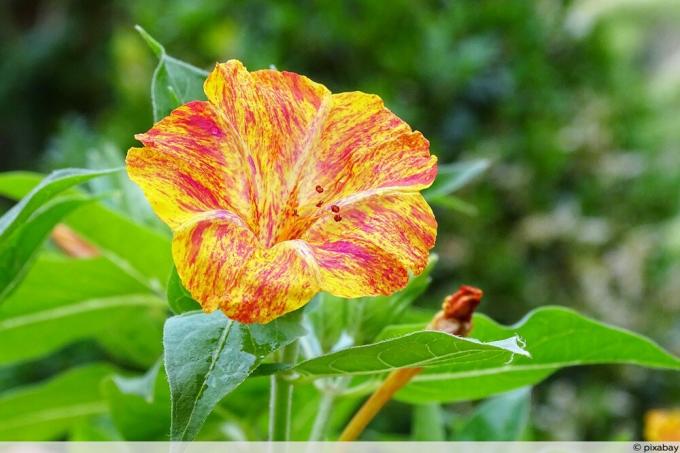
table of contents
- Characteristics
- sowing
- Location
- Soil quality and substrate
- plants
- to water
- Fertilize
- Cutting / trimming
- Overwinter
- Multiply
- Diseases and pests
- Nice varieties
Profile and care information open +conclude -
- Flower color
- yellow, multicolored, orange, pink, red
- Location
- Absunnig, sunny, full sun
- Heyday
- June, July, August, September, October
- Growth habit
- upright
- height
- up to 2 m high (rarely)
- Soil type
- sandy, loamy
- Soil moisture
- moderately moist, fresh
- Limescale tolerance
- k. A.
- humus
- rich in humus
- Poisonous
- Yes
- Plant families
- Wonder flower family, Nyctaginaceae
- Plant species
- Bedding plants, border flowers, potted plants, ornamental plants
- Garden style
- Flower garden, pot garden, ornamental garden
Night owls among the hobby gardeners don't want to miss the wonder flower. The floral magical creature from tropical regions only unfolds its picturesque splendor in the evening. The unorthodox heyday does not mean that a Mirabilis jalapa makes itself unpopular with capricious claims. These instructions illuminate all aspects of uncomplicated care. A selection of beautiful varieties invites you to browse in search of your personal favorite miracle flowers.
Characteristics
- Plant family: Wonderflower family (Nyctaginaceae)
- Genus: Mirabilis with more than 60 species
- Type: Miracle flower, Japanese miracle flower (Mirabilis jalapa)
- Home region: Central America, primarily Mexico
- Growth: herbaceous, perennial plant
- Growth height: 60 to 100 cm, rarely up to 200 cm
- Flowering period: June to October from early evening to dawn
- Flowers: funnel-shaped, 5-6.5 cm long, 2-3 cm wide
- Hardy: no
- Toxic: yes
Characteristic of miracle flowers are thick, tuberous roots that are reminiscent of dahlia bulbs. It is thanks to the strong persistence organs that the tropical flower beauties in in our regions can be cultivated for several years without any problems, provided they are professional and frost-free overwinter. How to do this will no longer remain hidden from you when you read these care instructions.
sowing

The time window for cultivation behind glass opens in March. Miracle flowers grown from seeds benefit from a vital growth advantage when they find their way into the bed or tub in early summer. Certified seeds can be purchased cheaply in well-stocked specialist shops. The pea-sized seeds are handy and easy to sow. The following guide explains step by step how to do it right:
- Soak seeds in lukewarm water or chamomile tea for 24 hours
- Fill pots with peat-free seed soil or unfertilized coconut fiber substrate
- Make a small depression in the middle with a pricking stick
- Put a seed in the hollow and cover 1-1.5 cm high with soil
- Press on the substrate and pour water at room temperature
- Cover with cling film or put on a transparent hood
In the bright, warm window seat at 15 to 20 degrees Celsius, the first germ layers appear within 14 days. Keep the seed soil constantly slightly moist and do not apply any fertilizer. If the cotyledons break through the seed coat, the cover can be removed from the pot. By the middle of May the planting season begins, the seedlings have turned into vital young plants with small tubers. Care is limited to a continuous water supply without the risk of waterlogging. Apply diluted liquid fertilizer when two to three true pairs of leaves have developed over the cotyledons.
Note: Direct sowing of miracle flower seeds is only crowned with success in mild wintry wine-growing regions. The best time is from the end of April to the beginning of May. At a distance of 50 to 75 centimeters, insert the spherical seeds 1.5 to 2 centimeters deep into the loose, weed-free soil. A later sowing directly into the bed shortens the flowering time of Mirabilis jalapa by several weeks.
Location
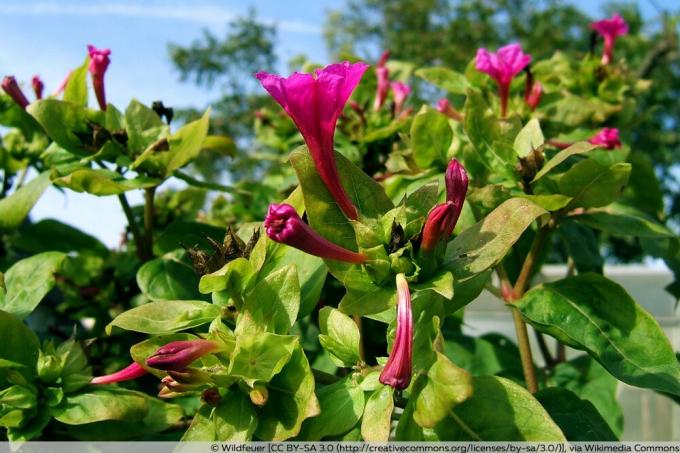
A sunny to shady location sets the course for a miracle flower to stage a picturesque flower fairy tale at the end of the day. It should be at least six hours of sunshine that a Mirabilis jalapa can enjoy in the bed and on the balcony. A sheltered location is advantageous so that young shoots do not break in strong winds or the flower dress is disheveled.
When choosing a location, consider the expansive growth of the exotic sun worshipers. A distance of 50 to 75 centimeters to the neighboring plants prevents space problems. Furthermore, diseases and pests have an easy time of it if the leaves of neighboring plants are in permanent contact.
Soil quality and substrate
As a permanent bloomer in summer, wonder flowers stand out in every normal garden soil. Vitality and blooming are guaranteed when the soil is fresh and moist, rich in nutrients and loosely permeable. For successful cultivation in the bucket, we recommend peat-free potting soil with a third of valuable additives such as sifted compost, fertilized coconut fibers, expanded clay and sand.
plants
The best time to plant miracle flowers is in the second half of May. The young plants should be in the garden soil or potting substrate by mid-June at the latest, so that you can enjoy the flowering period in full. When it comes to planting depth, Mirabilis jalapa are out of the ordinary. The fleshy tubers must not be too deep into the earth. If young shoots first have to fight their way through a thick layer of soil, this process delays growth and the start of the flowering period. The following instructions explain how you can properly plant pre-grown, pre-purchased young plants and tubers in the bed:
- Weed the bedding soil, raking repeatedly for a fine crumb structure
- Dig shallow pits at a distance of 50 to 75 cm
- Enrich the excavation with sieved compost and a handful of horn shavings
- Soak the miracle flowers grown in the pot in water and pot
- Place in the ground while maintaining the previous planting depth
- Plant tubers a maximum of 3 cm deep with the thick end up
For a good connection to the soil, press the soil a little with both hands. Water the planting site with a fine shower so that the substrate is not washed away.
Plants in pots and flower boxes
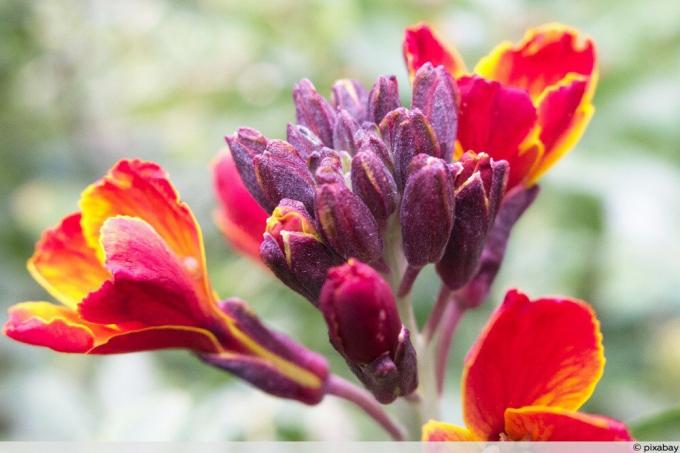
Modest maintenance requirements, moderate growth and lavish flowering at the end of the day make miracle flowers the ideal summer decoration for pots and flower boxes. The main difference to planting in beds is that there is drainage on the bottom of the container so that excess rain and irrigation water can run off unhindered. To do this, cover the floor openings with a 3 to 5 centimeter high layer of potsherds, expanded clay or gravel. So that the substrate does not clog the water-bearing soil layer, insert an air and water-permeable fleece. Fill the pot or balcony box two-thirds full with loose, peat-free potting soil. For an opulent, full appearance, the planting distance is shortened to 30 to 40 centimeters. For the planting depth of preferred miracle flowers and tubers, the values for bedding apply.
Tip: Set aside a stick in good time for vigorously growing miracle flowers. A simple support reliably prevents wind throws in the bed and on the balcony.
to water
Caring for a miracle flower is characterized by high water consumption. Pay a visit to your exotic flower beauty in the early morning with the watering can. You can use a thumb test to determine whether there is actually a need for watering. Stick your finger an inch deep into the ground. If no moisture can be felt, pour directly onto the root disc. On hot summer days, please check again in the early evening whether your Mirabilis jalapa would like to be watered.
Fertilize
To put on a new flower garment every night, a miracle flower costs a lot of energy. The nutrient stocks in the garden soil and potting substrate do not completely cover the requirements. If you add a liquid fertilizer for flowering plants to the irrigation water every week, growth and flowering will stay going. It is important to note that you pour clear water before and after so that nutrient salts are optimally processed.
Would you like to overwinter a wonder flower? Then stop the nutrient intake at the end of September. In this way, you are signaling the beginning of the winter dormant phase to the exotic perennial.
Cutting / trimming
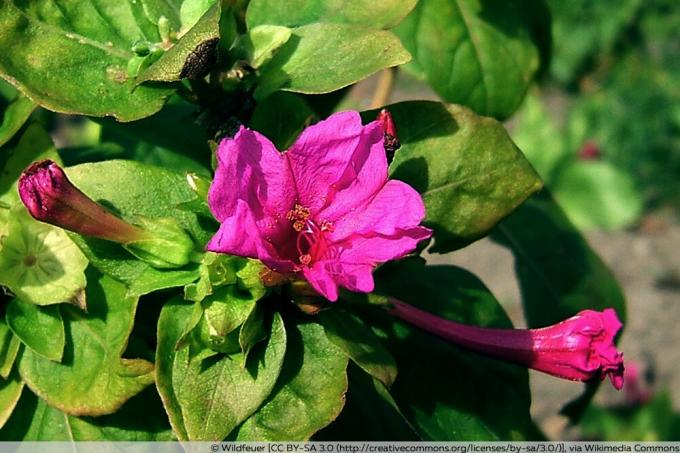
Last night's withered flowers could prevent plump buds from opening. By regularly cleaning out what has faded, you actively encourage miracle flowers to continue to bloom. Just snap off a wilted funnel flower with your fingers. It can be done faster by plucking off dead petals.
Mirabilis jalapa comes with a good-natured cut tolerance. If a plant grows over your head or if you are annoyed by long shoots, a cut with sharp secateurs will solve the problem. You subject the wonder flower to a radical pruning in autumn if you want to overwinter the plant frost-free.
Tip: So that you can harvest seeds and multiply a miracle flower by sowing, do not clean withered flowers from August onwards. Pollinated flowers form distinctive seeds with a diameter of up to 3 centimeters by autumn. If stored in a dark, cool and dry place, the germination capacity is retained for up to 3 years.
Overwinter
In their tropical home regions, wonder flowers thrive as perennial shrubs. Ambitious hobby gardeners take advantage of this fact and do not throw away the plants after the summer blossom festival. A preparation phase begins at the end of September so that the perennial tubers can hibernate healthily in the frost-free winter quarters. The following instructions describe how you can successfully guide Mirabilis jalapa through the cold season:
- Do not fertilize any more from the end of September
- Do not water from the middle of October
- dig in late autumn (before the first frost) with the digging fork
- Cut the shoots back to 5 cm
- Cut off the root strands
- Clean the lumps of soil with a paintbrush
- Let it dry for a few days in an airy, rain-protected place
Overwinter wonder flower bulbs, like dahlias. In the cool, dark winter quarters at 5 to 8 degrees Celsius, the tubers hold out dry until the next spring. You can choose to place the bulbs on a wooden shelf or in a box with sand. Twist the thick roots every 14 days. If the air in the room is very dry, mist the tubers every now and then with soft water so that they do not dry out completely.
Multiply
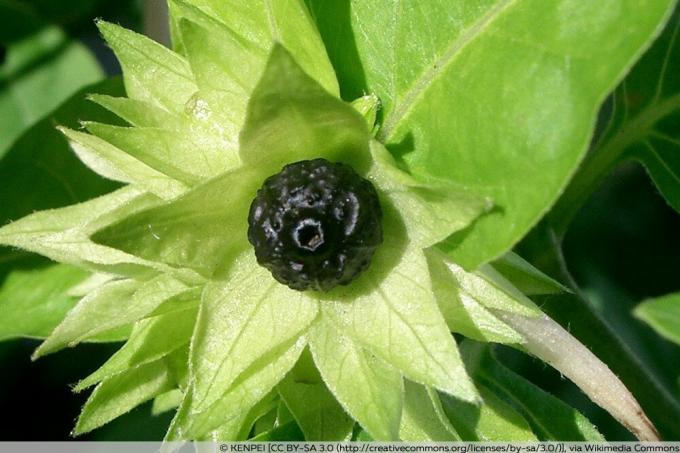
In autumn, collect the pea-sized seeds for sowing from March behind glass, as these care instructions explain at the beginning. Two other propagation techniques give you new plants for free:
division
- Get overwintered tubers out of the winter quarters in March / April
- place on a firm surface
- Halve with a sharp knife
- Place sections 3-4 cm deep in coconut fiber substrate (thick end up)
- keep slightly damp in the bright, warm window seat
- Plant out in mid-May
Cuttings
- Cut off 10-15 cm long, non-flowering head cuttings in June
- Dip the cut surfaces in rooting powder
- half planted in pots with pricking soil or coconut fiber substrate
- Place the pots in the propagation box or cover them with a plastic bag
In a bright, not full sun location, temperatures of 23 to 25 degrees Celsius are required for rapid rooting. If the first leaflets sprout, the cover has done its job. Keep the substrate slightly moist continuously. If your pupils boast of their own small tubers, they can be planted in the bed, in the tub or in the flower box.
Diseases and pests
A sunny location and loving care activate strong defenses in a wonder flower. Mirabilis jalapa rarely has diseases and pests to complain about. Warm, humid weather causes powdery mildew, a widespread fungal infection. A mealy-gray coating on the leaves is symptomatic. Milk-water has proven itself as a home remedy against powdery mildew. Mix 1 liter of water with 125 milliliters of fresh milk. Spray infected parts of the plant every 2 to 3 days until symptoms no longer occur.
Aphids do not spare a wonder flower if it is weakened by adverse weather. You can get rid of the pests quickly with the classic soap solution. Warm up 1 liter of water in order to stir in 30 to 40 grams of pure curd soap and 1 teaspoon of alcohol. Pour the cooled mixture into a hand sprayer. Spray infested plants every 2 to 3 days until all of the lice are gone.
Nice varieties
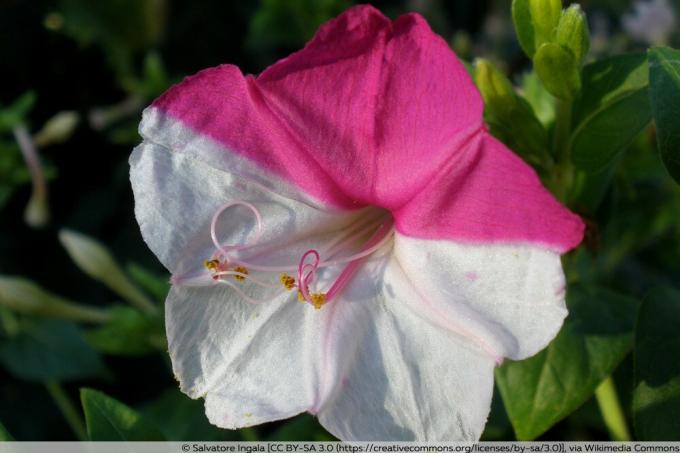
With its colorful varieties, the Japanese wonder flower transforms beds and balconies into a sea of flowers in the early evening hours. The following selection presents the recommended premium varieties in more detail:
Marbles mix
With a furious mix of colors, the Mirabilis variety steals the show from other summer flowers. Almost every color is represented. White, yellow, orange, red and pink flowers vie for the viewer's favor. The sunnier the location during the day, the more splendid the floral symphony in the evening.
Colorful
The name of the variety signals that this wonder flower is colorful in the garden, on the balcony and terrace. A single blossom shines with multi-colored stripes, with yellow, red and pink predominating in various nuances. The local site conditions determine the specific expression in the play of colors. 'Colorful' is therefore always good for a floral surprise.
Yellow
When the sun's rays recede in the early evening, this wonder flower variety continues the golden-yellow color spectacle. In all conceivable shades of yellow, the beauty of the flowers vies for visits from insects, bees and butterflies, who are far from thinking about the end of the day.
White
With its white flower garment, this wonderful variety of miracle flowers harmonises with all the colors of its neighbors. In modern garden design, the white-flowering Mirabilis jalapa is a welcome guest to give clear, strict lines and a puristic look exotic charm.
Limelight
The unique 'Limelight' variety combines its purple flowers with light green leaves. The extraordinary play of colors comes into its own impressively at dusk. When the flowers are scarce during the day, the heart-shaped, pointed leaves act as jewelry. Hobby gardeners who want a decorative presence in beds or pots during the day are well advised to use this type of wonder flower.



